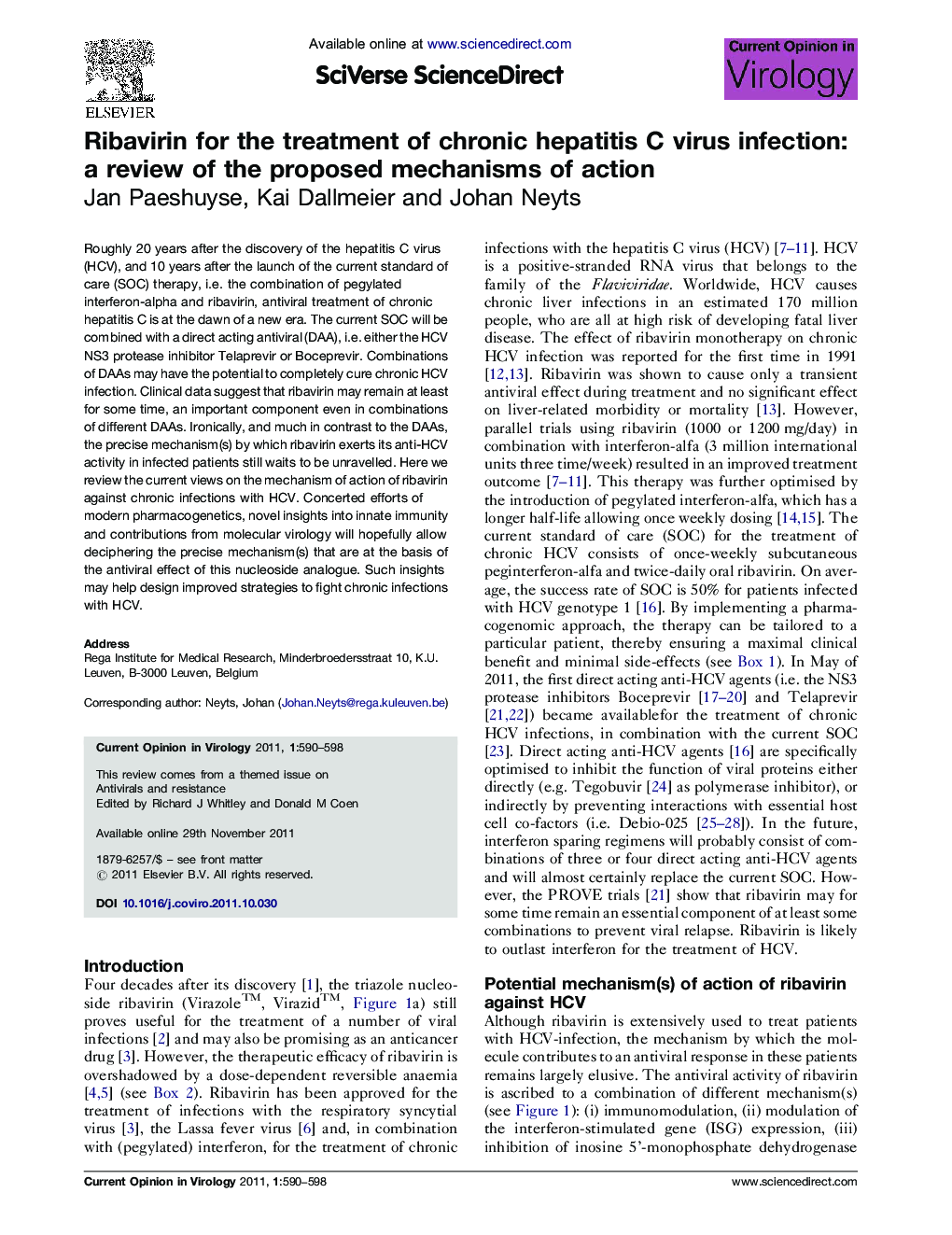| Article ID | Journal | Published Year | Pages | File Type |
|---|---|---|---|---|
| 2473414 | Current Opinion in Virology | 2011 | 9 Pages |
Roughly 20 years after the discovery of the hepatitis C virus (HCV), and 10 years after the launch of the current standard of care (SOC) therapy, i.e. the combination of pegylated interferon-alpha and ribavirin, antiviral treatment of chronic hepatitis C is at the dawn of a new era. The current SOC will be combined with a direct acting antiviral (DAA), i.e. either the HCV NS3 protease inhibitor Telaprevir or Boceprevir. Combinations of DAAs may have the potential to completely cure chronic HCV infection. Clinical data suggest that ribavirin may remain at least for some time, an important component even in combinations of different DAAs. Ironically, and much in contrast to the DAAs, the precise mechanism(s) by which ribavirin exerts its anti-HCV activity in infected patients still waits to be unravelled. Here we review the current views on the mechanism of action of ribavirin against chronic infections with HCV. Concerted efforts of modern pharmacogenetics, novel insights into innate immunity and contributions from molecular virology will hopefully allow deciphering the precise mechanism(s) that are at the basis of the antiviral effect of this nucleoside analogue. Such insights may help design improved strategies to fight chronic infections with HCV.
► Ribavirin is a triazole nucleoside that is used in combination with pegylated interferon-α for the treatment of HCV infections. ► Ribavirin is extensively being used to treat HCV-infected patients. ► The mechanism by which the molecule contributes to an antiviral response in these patients remains elusive. ► Ribavirin may exert its antiviral activity via a number of distinct mechanisms.
